#Napoleon’s Egypt campaign
Text
Roustam’s first impression and description of Napoleon:
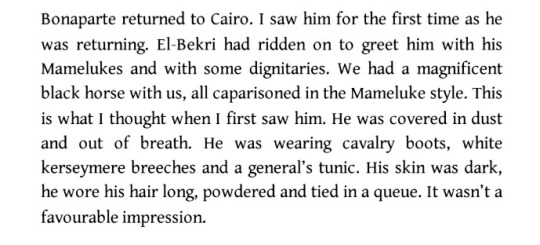
#roustam raza#raza#roustam#napoleon#napoleon bonaparte#napoleonic era#napoleonic#first french empire#french empire#france#Mameluke#Mamelukes#Egypt#Egypt campaign#Napoleon’s Egypt campaign#history#1790s#description of Napoleon
31 notes
·
View notes
Text

Bonaparte and the Sphinx by Amédée Vignola
#napoléon#napoleon#bonaparte#egypt#sphinx#art#amédée vignola#napoleon bonaparte#napoléon bonaparte#egyptian campaign#france#french#history#europe#european#pyramids#egyptian#pyramid#campaign#french revolutionary wars#napoleonic#french republic
148 notes
·
View notes
Text
Eugène about Sidney Smith
This is another snippet taken from Eugène de Beauharnais’s fragmented memoirs (Memoires et correspondance politique et militaire du Prince Eugène, Tome 1). In it, he mentions that while in Egypt, he crossed paths with Sidney Smith twice, both times missing him by an inch, the first time happening in Suez and the second time, related here, during the Battle of Aboukir. According to Eugène, during this battle [...]
[… t]he enemy was quickly dislodged from the advanced positions they occupied. Although I was not an artillery officer, I was nevertheless instructed by the general-in-chief to direct the first two guns we had taken from the Turks against the English boats on our left, already moving away.
[Insert sequence of a dozen clueless cavalrymen surrounding a Turkish canon.]
So, that’s where the canon ball goes in, right? And, I believe we have to light a fuse or something… Isn’t there also some kind of powder involved? Oh, Claude, maybe don’t stand directly in front of the barrel, we don’t really know what … [canon goes off] Woah! Hey, I think we almost hit something!
I noticed that one of our cannonballs fell close enough to a longboat to cover the men in it with water; and, by a singular coincidence, Commodore Sidney Smith was also among them, as he himself assured me, fifteen years later.
Which I assume to have happened during the Congress of Vienna that I understand both men attended. I can just imagine, during a nice evening dinner at the Hofburg, Eugène telling the people sitting next to him about the battle of Aboukir:
"And then Napoleon said we should fire a canon at the British boats, and we had no clue what we were doing but guess what, we still almost hit one. Don’t know who was in it but one thing I know for sure, they must have been soaking wet…"
Sidney Smith from across the table, jumping up: "Hold a second! That was you?"
#napoleon's family#eugene de beauharnais#napoleonic era#egyptian campaign#battle of aboukir#sidney smith#was reminded by this by#napoleonic sexyman tournament#egypt 1799
10 notes
·
View notes
Photo
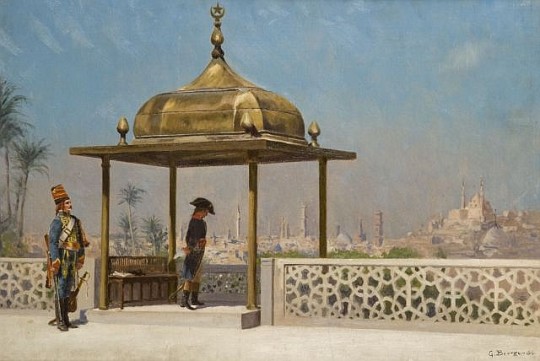
Bonaparte sur une terrasse au Caire - Gustave Bourgain - WikiArt.org
34 notes
·
View notes
Video
NAPOLEON-EGIIPTO-ARTE-PINTURA-ESFINGE-HISTORIA-PERSONAJES-FRANCIA-PINTOR-ERNEST DESCALS por Ernest Descals
Por Flickr:
NAPOLEON-EGIIPTO-ARTE-PINTURA-ESFINGE-HISTORIA-PERSONAJES-FRANCIA-PINTOR-ERNEST DESCALS- El General NAPOLEON BONAPARTE en la campaña militar en EGIPTO con la Esfinge a su lado, personajes de la historia de Francia en el entorno monumental de sus conquistas. Pintura del artista pintor Ernest Descals con acuarelas y gouache sobre papel de 35 x 27 centímetros, obras de recreación histórica.
#NAPOLEON#NAPOLEON BONAPARTE#CAMPAÑA#EGIPTO#FRANCIA#ESFINGE#RECREACION HISTORICA#CONQUISTAS#CONQUISTADOR#CONQUEROR#GENERAL#EJERCITO#EGYPT#FRANCE#CHARACTERS#SPHINX#PERSONAJES#PERSONAJES HISTORICOS#HISTORY#HISTORIA#HISTORICAL FIGURES#FRENCH ARMY#EMPERADOR#MILITARY#EMPEROR#CONQUEST#MILITARY CAMPAIGNS#MONUMENTAL#MONUMENTS#MONUMENTOS
5 notes
·
View notes
Photo
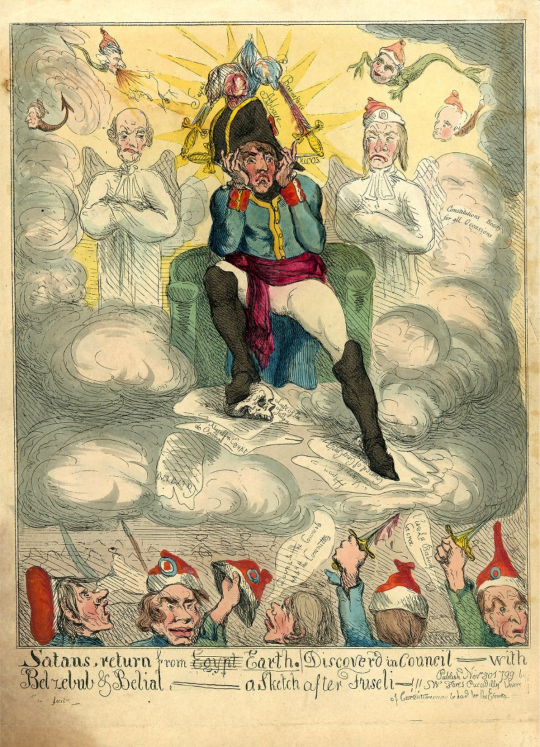
.....hey, everyone go bully Naps. The :C expression is killing me.
“Satan’s return from Egypt Earth”
University of Washington’s Napoleonic Period Collection of Political Caricatures
0 notes
Text
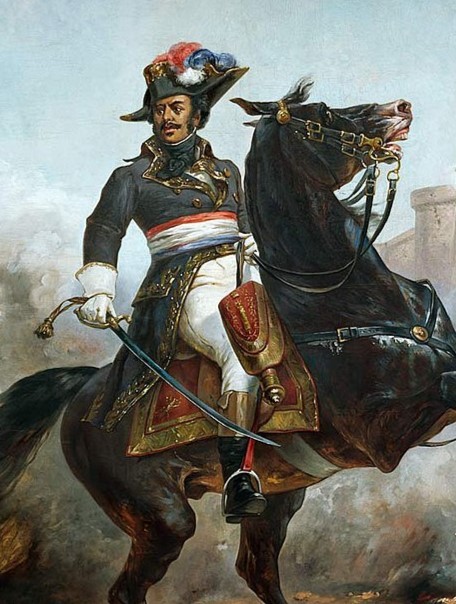
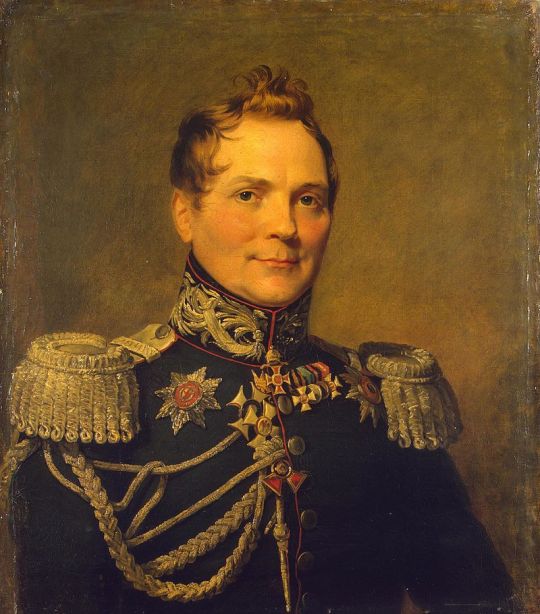
(correction: title should also say vs. Karl Wilhelm von Toll. But funny mistake given the standings at the moment I'm writing this)
Thomas-Alexandre Dumas
“mustache”
“Tall! Daring! Swashbuckling! A devoted husband and father! Had a personal conflict with Napoleon! Also it was said he could, while holding onto a bar above his head, LIFT A HORSE WITH HIS THIGHS. How is he not on this list ten times already! Vote for General Dumas!”
“He was so hot that he inspired The Three Musketeers, The Count of Monte Cristo, and many more books that his son, Alexandre Dumas, wrote. He definitely looked the part of a sexyman, as he son recounts in his memoirs: "My father, as already stated, was twenty-four, and as handsome a young fellow as could be found anywhere. His complexion was dark, his eyes of a rich chestnut colour [...]. His teeth were white, his lips mobile, his neck well set on his powerful shoulders, and, in spite of his height of five feet nine inches, he had the hands and feet of a woman. These feet were the envy of his mistresses, whose shoes he was very rarely able to put on." He could crush you between his thighs: "His free colonial life had developed his strength and prowess to an extraordinary degree; he was a veritable American horse-lad, a cowboy. His skill with gun or pistol was the envy of St. Georges and Junot. And his muscular strength became a proverb in the army. More than once he amused himself in the riding-school by passing under a beam, and lifting his horse between his legs." He was so badass he could beat 13 men with 4 and take all the enemy prisoner, and defend against hundreds of men on a bridge by himself. He performed these acts of valour numerous times in Italy. He was so formidable that the Austrians named him the "Schwartz Teufel", or the Black Devil, and his feat at the bridge earned him the moniker of "Horatius Cocles of Tyrol". He wasn't afraid to stand up to his morals and protest against unfair treatment. When unjust executions by the guillotine were happening outside his quarters, he closed the blinds of his curtains, earning him the nickname "Mr. Humanity". When in the Vendée, he complained about the wanton indiscipline in his troops. When in Italy, Berthier wrongly reported his actions as one of "observation" in St. Antonio. Dumas wrote to General Bonaparte that if Berthier was in the same position, he would have shit his pants. Dumas abhorred plunder, never exhorted the locals, and ordered the Directory agent who had come to persuade him otherwise be shot if he dared present himself to Dumas again. Integrity and a sense of moral justice is sexy, mark my words. For Dumas' final qualifier as a sexyman, look no further than this Tumblr heritage post (https://www.tumblr.com/petermorwood/133803437020/hortensevanuppity-elodieunderglass), with 300,000 notes and counting. And I quote: "- daddy general dumas was an immense fierce french warrior who was a 6 foot plus, stunningly gorgeous and charismatic Black gentleman - he invaded egypt - the native egyptians said “is this napoleon? this must be napoleon. we for one welcome our majestic new overlord” - then napoleon showed up - napoleon has all the presence of yesterday’s plain Tesco hummus - the native egyptians were like “… no… no, we’ve thought very hard and we’ll have General Dumas actually” - this did not make napoleon happy - in fact it made him jealous - napoleon felt so emasculated that he launched a campaign of revenge against General Dumas, including taking away his pension, that probably inspired a lot of Alexandre’s rather satisfying scenes in which fathers are nobly avenged and the money-grubbing villains are rubbed in the mud" I rest my case. Tl;dr: He was so hot he inspired multiple books, he was a stronk man who could crush you between his thighs or carry you like a sack of potatoes, and he was so badass that he could take on odds of 1 to 3. He had a foul mouth but a heart of gold and his actions were never self-serving. Posts relating to him on Tumblr have had 300,000 notes and counting. He is qualitatively and quantitatively qualified to be a sexyman.”
Karl Wilhelm von Toll
"smart military organisation thinking”
112 notes
·
View notes
Photo
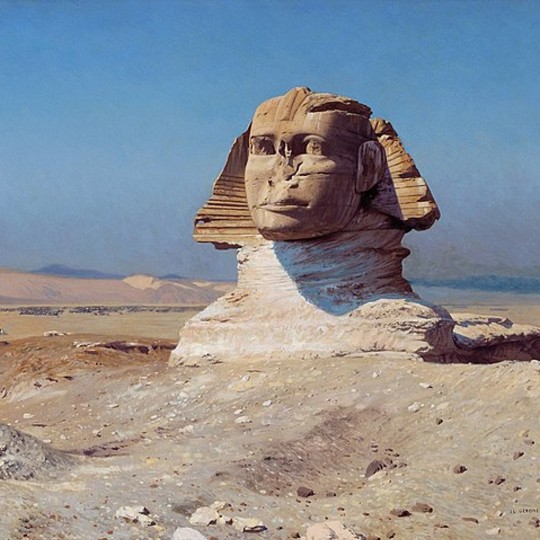
Napoleon's Campaign in Egypt and Syria
The French Expedition to Egypt and Syria (1798-1801), led by Napoleon Bonaparte, aimed to establish a French colony in Egypt and to threaten British possessions in India. Despite initial French victories, the campaign ultimately ended in failure, and Egypt remained under Ottoman control. The expedition also led to the discovery of the Rosetta Stone and the birth of modern Egyptology.
Continue reading...
72 notes
·
View notes
Text
Gallery Collection 001

Published: 2-21-2024 | Updated: N/A
SUMMARY
This is the first in a series of upcoming investment objects for Sims 2 – things your sims can use to generate income over time. From 1975-2000, Anheuser-Busch, Inc. commissioned 30 paintings of African kings and queens for an extended outreach and marketing campaign. This set of paintings features artwork from this amazing series. Celebrate Black History Month 2024! #co2bhm #bhm2024 #sims2bhm.
*No copyright infringement intended – I own no rights to these images.
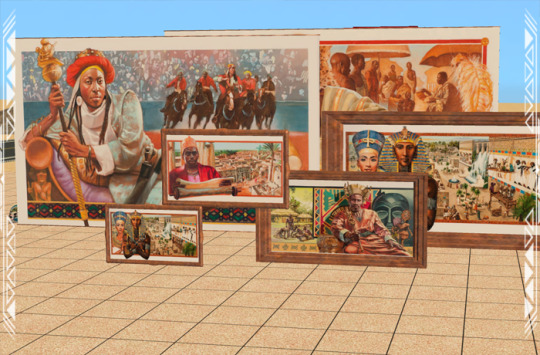

DETAILS
Requires Sims 2. Requires Apartment Life for shiftability.
§1K-15K | Buy > Deco > Wall Hangings
Paintings are centered on 1-tile but cover more tiles than that. They come in various gallery sizes and images have been edited to fit the mesh. After purchase, their value increases by approximately 2% daily – watch out for burglars!
Files with “MESH” in their name are REQUIRED. Frame recolors include EA/Maxis and yeti textures. Frame and painting recolors are merged into two files so you’ll have to take them or leave them.
ITEMS
Great Kings & Queens of Africa: Paintings 001-006 (92-764 poly)
DOWNLOAD (choose one)
from SFS | from MEGA
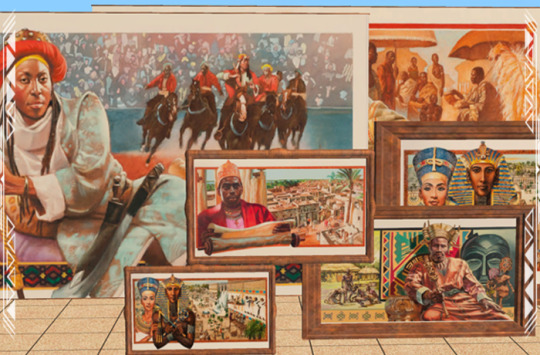

IMAGES
Akhenaton Pharaoh of Egypt (1375-1358 BC) by Barbara Higgins Bond
Alfonso I King of the Kongo (circa 1486-1543) by Carl Owens (1929-2002)
Askia Muhammaed Toure King of Songhay (1493-1529) by Leo Dillon
Benhanzin Hossu Bowelle—The King Shark (1841-1906) by Thomas Blackshear II
Cleopatra VII Queen of Egypt (69-30 BC) by Ann Marshall
Hannibal Ruler of Carthage (247-183 BC) by Charles Lilly
Hatshepsut The Ablest Queen of Far Antiquity (1503-1482 BC) by Dean Mitchell
Idris Alooma Sultan of Bornu (1580-1617) by Charles Lilly (1949-)
Ja Ja King of the Opobo (1821-1891) by Jonathan Knight
Khama III The Good King of Bechuanaland (1819-1923) by Carl Owens
Makeda Queen of Sheba (960 BC) by Debra Edgerton
Mansa Kankan Musa King of Mali (1306-1337) by Barbara Higgins Bond
Menelek II King of Kings of Abyssinia (1844-1913) by Dow Miller
Moshoeshoe King of Batsutoland (circa 1786-1870) by Jerry Pinkney
Mwana Ngana Ndumba Tembo—Ruler of the Angolan Tchokwe (1840-1880 circa) by Kenneth Calvert
Nandi Queen of Zululand (1778-1826 AD) by HM Rahsaan Fort II
Nefertari Nubian Queen of Egypt (192-1225 BC) by Steve Clay
Nehanda of Zimbabwe (1862-1898) by Lydia Thompson
Nzingha—Amazon Queen of Matambo (1582-1663) by Dorothy Carter
Osei Tutu King of Asante (circa 1650-1717) by Alfred Smith
Queen Amina of Zaria (1588-1589) by Floyd Cooper
Samory Toure The Black Napoleon of the Sudan (1830-1900) by Ezra Tucker
Shaka-King of the Zulus (1787-1828) by Paul Collins
Shamba Bolongongo African King of Peace (1600-1620) by Roy LaGrone
Sunni Ali Beer King of Songhay (circa 1442-1492) by Leo Dillon
Taharqa King of Nubia (710-664 BC) by John Thomas Biggers
Tenkamenin King of Ghana (1037-1075 AD) by Alexander Bostic
Thutmose III Pharaoh of Egypt (753-712 BC) by Antonio Wade
Tiye The Nubian Queen of Egypt (circa 1415-1340 BC) by Leonard Jenkins
Yaa Asantewa Queen of Ghana (1863-1923) by Barbara Higgins Bond
CREDITS
No copyright infringement intended – I own no rights to these images. Artwork and trademarks are the property of their respective creators and/or owners. If this exceeds fair use, please contact me via private message.
Thanks: Simming and Sketchfab Communities. Sources: Any Color You Like (CuriousB, 2010), Beyno (Korn via BBFonts), Console Certificates (d_dgjdhh, 2019; 2011), EA/Maxis, Gyeongbokgung Sajeongjeon Painting (National Heritage Administration, 2024 via CCA; Sketchfab), Great Kings and Queens of Africa Series (Anheuser-Busch, Inc., 1975-2000; Kentake, 2016), Offuturistic Infographic (Freepik), Painting by Zdzislaw Beksinski (Sosnowski, 2018 via CCA), Yeti Metals (Shastakiss, 2017).
76 notes
·
View notes
Text
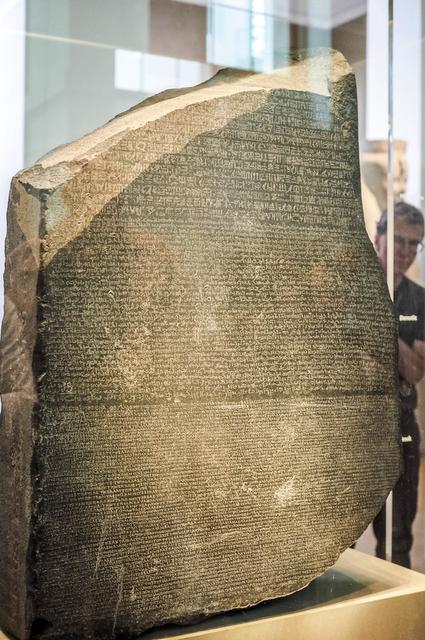
"The Rosetta Stone is a slab of granitoid stone featuring a written decree issued in 196 B.C. by a group of Egyptian clergy and Egypt’s ruler, Ptolemy V, attesting to his generosity and devoutness. The decree is written in three ways: hieroglyphics, which were used mainly by priests; Demotic, a somewhat simpler script used for everyday purposes; and ancient Greek.
The use of hieroglyphics died out after the 4th century and the writing system became an enigma to scholars, making the stone an essential tool in helping researchers understand the long-forgotten language.
It wasn't until the 19th century—two thousand years after its creation—that the Rosetta Stone helped scholars crack the code of hieroglyphics. French army engineers who were part of Napoleon Bonaparte’s Egypt campaign discovered the stone slab in 1799 while repairing a fort near the town of Rashid (Rosetta)."
96 notes
·
View notes
Text
Bernadotte, Minister of War

"While Napoleon was campaigning in Egypt, in July 1799 Bernadotte was appointed Minister of the War with the support of Joseph and Lucien Bonaparte. His abrasive style meant he didn’t last for long. When informed there was no money in the treasury, he sent orders to stir up the men at the front, and before long the necessary supplies were furnished. After the incident Directory was alarmed at Bernadotte’s popularity and dismissed him from office in September. When Napoleon returned to France from Egypt, Bernadotte unsuccessfully attempted to have him arrested for desertion and breaking the quarantine that applied to ships returning from Egypt. When asked by his brother-in-law whether he would support the coup of 18 Brumaire, Bernadotte remained neutral."
(Debutify. “Jean Baptiste Bernadotte - Part 1: French Soldier to Swedish King.” Napoleonic Impressions, 15 Jan. 2021, napoleonicimpressions.com/blogs/napoleonic-impressions/jean-baptiste-bernadotte-part-1-french-soldier-to-swedish-king.)
#Marshal Bernadotte#maréchal Bernadotte#Jean-Baptiste Bernadotte#Bernadotte#Napoleon's Marshals#Napoleonic Wars#Napoleonic Era
30 notes
·
View notes
Text


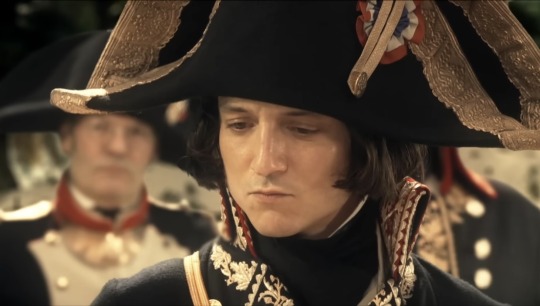
This Napoleon was pretty cute
#Napoleon#napoleon bonaparte#actor#The Story Of Young Napoleon's Campaign For Egypt I Napoleon: Egyptian Campaign#Timeline - World History Documentaries#documentary#first French empire#French empire#napoleonic era#napoleonic#19th century#frev#french revolution#France#Egypt#fashion history#bicorne#napoleonic wars#historical fashion#napoléon#napoléon bonaparte#Bonaparte#film#still#film still#history#military uniform#military#uniform
275 notes
·
View notes
Text
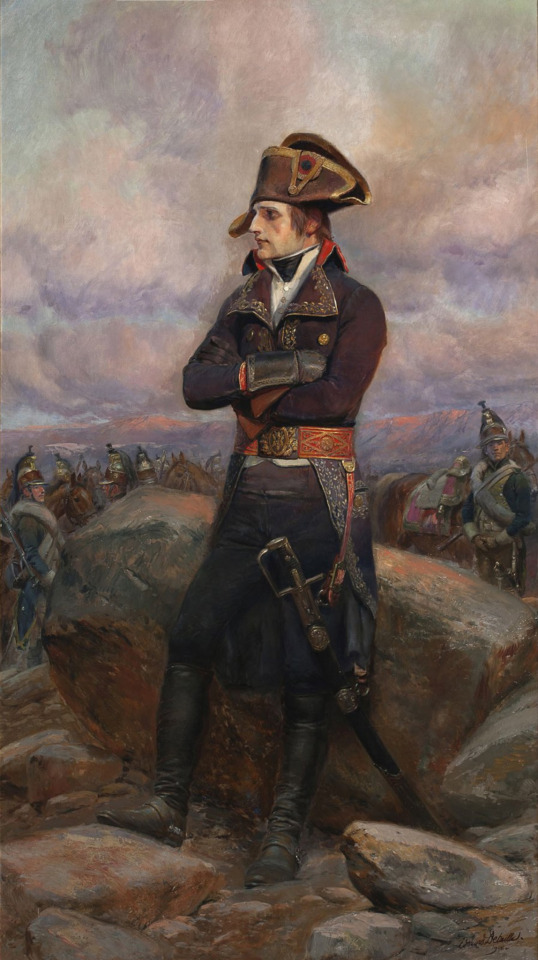
Bonaparte in Egypt, 1798 by Édouard Detaille
#napoléon#napoleon#egypt#napoleon bonaparte#napoléon bonaparte#art#portrait#édouard detaille#egyptian campaign#france#french#french revolutionary wars#napoleonic#history#bonaparte#europe#european#egyptian#campaign
178 notes
·
View notes
Text
Pointing Out the Historical Inaccuracies (and Some Accuracies) of Ridley Scott's Napoleon 🤓

The only interesting parts of this film are the costumes, and maybe one or two music tracks. The rest of the movie is just awful. The story can hardly be called a story. It's just miscellaneous boring scenes duct taped together. None of the characters are developed beyond a single trait, if that. A period this broad shouldn't have been crammed into a movie this short. I honestly wouldn't have disliked the historical inaccuracy so much if it had been sacrificed for the sake of a good narrative, but this is bad. Even if you don't know about the era enough to nitpick it, I wouldn't recommend this film to anyone.

TL;DR go watch Waterloo or The Duelists instead.
Accurate Historical Details
There were some minor details that made me perk up like, "Ah, yes! It did happen like that!" The rest of the movie is so inaccurate that these details stuck out.
Napoleon tugged on peoples' ears as a sign of affection. You see this in the movie with Tallyrand and Josephine. He also did this a lot with his soldiers, which we don't see in the film. In fact, he doesn't interact with his soldiers much at all in the film.
The French fired a 101-cannon salute after Napoleon's first son was born.
Napoleon famously bumbled at the Coup of 18 Brumoire, and his brother Lucien had to step in to direct the French grenadiers.
It's contested whether or not Robespierre actually shot himself in the jaw, but I think at this point it's mostly accepted as truth? In any case, someone screwed up his jaw before he was arrested.
The British loved publishing political cartoons about Napoleon, including cartoons of him being cucked.
Joséphine did actually meet Tsar Alexander shortly before her death. I didn't know about this one and was happy to learn something new.
The depictions of line and square formations were okay.
Historical Inaccuracies
This is, in spite of its budget, one of most historically inaccurate pieces of media I've seen on the era, and on top of that it isn't even good.
There is so much historical context omitted from this film that I feel like anyone who doesn't have an interest in the time period will have NO idea what's going on. You are never really given the how and why of history other than "the Europeans are fighting and also Napoleon is there."
The overall characterization of Napoleon is just bizarre. Napoleon was smart, egotistical, ambitious, hot-tempered, and had a magnetic charisma and human charm that inspired a kind of blind loyalty in his soldiers. This is why he was so successful - and so dangerous. Napoleon never feels threatening or sinister in this film. He's just kind of there, slouching and sweating and mumbling under his breath as history unfolds. Bill and Ted's Excellent Adventure does a better job of depicting Napoleon than whatever the hell is going on here.
Napoleon was not present at the beheading of Marie-Antoinette.
He didn't have his horse shot out from under him at Toulon, and he didn't send gore-spattered cannonballs to his mother, as far as I know.
The movie casts a younger actress to play Joséphine de Beauharnais, but Joséphine was actually older than Napoleon.
I'm pretty sure that Napoleon didn't find and return the sword of Joséphine's ex-husband, although there is a legend stating that he attempted to confiscate it and was persuaded by Joséphine's son to return it.
The French army never shot their cannons at the Pyramids in Egypt. They also didn't loot the Pyramids, although they participated in a lot of heinous looting elsewhere.
Napoleon didn't leave Egypt because he found out he was being cucked by his wife - he'd already known about that for some time. He left Egypt because the campaign was failing and because the political situation in France was becoming untenable.
Jacques-Louis David attended the coronation of Napoleon, but didn't start his studies for the painting during the coronation itself. (At least as far as I know.)
The lake scene during the Battle of Austerlitz is a bit of a legend, but probably not true. The gigantic lake was more likely a series of shallow ponds, if it existed at all.
Napoleon did not lead cavalry charges, and he sure as shit didn't lead cavalry charges at the Battles of Borodino or Waterloo. In fact, Napoleon infamously sat a safe distance away while watching the bloody Battle of Borodino unfold.
Napoleon was not exiled following the Russian campaign. He was exiled after the War of the Sixth Coalition, in 1814.
Joséphine died in 1814, when Napoleon was still at Elba, not in 1815.
Trench warfare and scoped muskets were not used at the Battle of Waterloo.
Napoleon never met the Duke of Wellington.
That's uh. The cut version of my complaints.
25 notes
·
View notes
Text
A Prussian at Napoleon's court
Friedrich Wilhelm Ernst Freiherr von Knobelsdorff was a Prussian officer and high-ranking diplomat who had been for some time ambassador in Constantinople. In 1804, he was sent as King Friedrich Wilhelm III’s special envoy from Berlin to Paris for Napoleon’s coronation ceremonies. This is a report he wrote back home, translated from Publicationen aus den k. Preussischen Staatsarchiven, Volume 29. The original is, of course, in French.
Sojourn in Fontainebleau. Knobelsdorff's report. Paris 28 November 1804
I believe it is my duty to report to Your Majesty some details of my stay at Fontainebleau, as the extraordinarily distinguished manner in which I was treated there can only be seen as a public mark that the Emperor of the French wished to bestow on a man who has the honour of being entrusted with a special commission from Your Majesty.
On the morning of the 26th I received a letter from Marshal Berthier inviting me, in the name of the Emperor, to go to Fontainebleau the next day to go hunting with the sovereign; I am the only foreigner and member of the diplomatic corps to have received such an invitation.
All the others donated candles in the castle chapel in relief because they did not have to expose themselves to this mortal danger. - Okay, so Knobelsdorff did not write that. But I still bet it’s true.
I arrived at Fontainebleau at eight in the morning on the 27th and was asked to go to the château for breakfast at 9.30. My wife was invited to have breakfast with the Empress. The Grand Marshal showed me the carriage by which I would be taken to the place in the forest where the hunt was to begin, and the Master of the Horse handed me a paper containing the names of five of the Emperor's horses which would be at my disposal.
Caulaincourt also likely warned him that if on Knobelsdorff’s return the slightest harm had come to any of these five horses, Knobelsdorff would regret it for the rest of his life.
My carriage was immediately in front of the Emperor's, and Marshals Soult, Ney and General Duroc were travelling with me.
Ney and Soult together in one carriage, huh?
Knobelsdorff to Duroc: Oh, Your Excellency will also join us in the carriage?
Duroc (patting down both Soult and Ney, confiscating all sharp objects): Yepp. Somebody has to babysit these other two excellencies, you know.
They forced me to take a seat at the back, [...]
Duroc: Sit here. Don’t move. If any of these two as much as twitches, warn me!
[…] while my wife was in the Empress's carriage, who was kind enough to give her a seat between herself and Princess Joseph.
On our return from the hunt, Mme de La Rochefoucauld invited us to dine with the Empress; as we sat down for dinner, the Emperor asked me to sit next to the Empress, opposite him. After dinner, two games of whist were arranged; the Emperor, who does not usually play cards, was kind enough to play with my wife, and I had the honour of playing with the Empress.
I hope Josephine was also kind enough to loose to the husband what Napoleon won through cheating from the wife.
After the game, which hardly lasted more than half an hour, the Emperor spoke in a very interesting way about his campaigns in Egypt and spoke more particularly with me about the present situation of the Ottoman Empire; at about ten o'clock in the evening the Emperor and the Empress retired, and I left the same night for Paris...
So, somewhat more seriously: This report was not put in chiffres, so it was part of the official correspondence that could easily be intercepted by the French and read in Lavalette’s Cabinet noir. That alone guaranteed that Knobelsdorff would have nothing but praise for how he was treated by this newly minted emperor and his makeshift court. But it is still interesting how friendly relations between France and Prussia had been ever since Prussia dropped out the coalition against revolutionary France, and how10 years later the Prussians would claim to be France’s arch-nemesis.
But mostly I like to see Soult and Ney in that carriage together, apparently stille quite at ease with each other and maybe even on friendly terms by 1804.
#napoleon's court#napoleon's marshals#geraud christophe michel duroc#michel ney#jean de dieu soult#paris 1804
38 notes
·
View notes
Text

Presentation saber given by Napoleon Bonaparte to Drum Major De Stagnac during the Egypt campaign, circa 1800
from Czerny's
69 notes
·
View notes